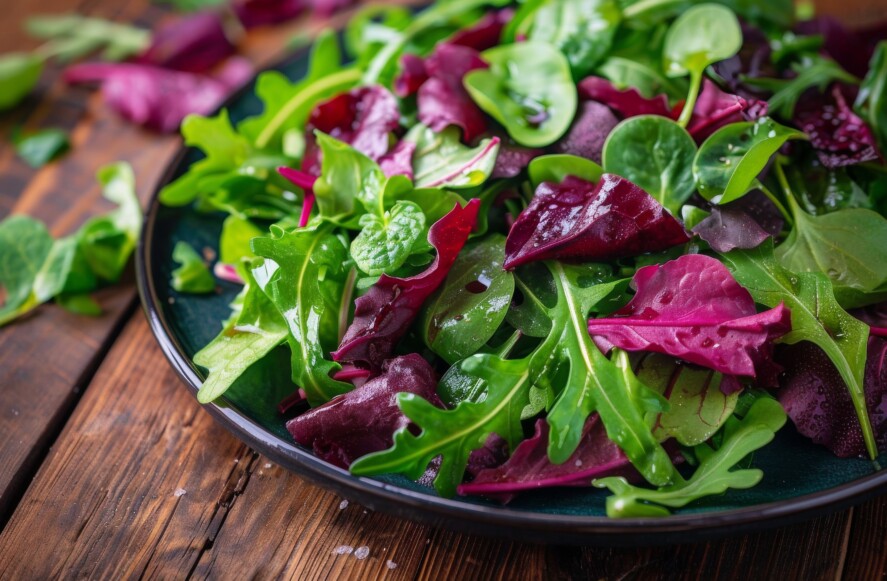-
Troppo Plant & Garden Articles
- Delicious Recipes
- TROPPO’s Food Forest in Te Puke, BOP (www,foodforest.org.nz)
- Troppo’s Plant Collection
- TROPPO's Nursery Directory
- Food Forests of New Zealand (www.foodforests.nz)
- Nursery Map - Plant Suppliers of NZ Directory (www.nurserymap.nz)
- Kids Garden Corner
- New Zealand Garden Bird Survey
- New Zealand Garden Groups
Mesclun Growing Guide: A Comprehensive Guide to Growing Mesclun

Mesclun Growing Guide; Mesclun, a delightful mix of young salad greens, has become a staple in gourmet kitchens and home gardens alike. This versatile blend typically includes a variety of leafy greens and herbs, providing a burst of flavor, color, and texture to any dish. If you’re looking to start your own mesclun garden, this guide will walk you through everything you need to know.
What is Mesclun?
Mesclun is a French term that means “mixture.” Traditionally, mesclun refers to a mix of young, tender salad greens and herbs. Common components include arugula, chervil, endive, mizuna, mustard greens, and various types of lettuce. The exact mix can vary, offering a diverse range of flavors from peppery to sweet, and textures from crisp to tender.
Why Grow Mesclun?
Growing mesclun at home offers several benefits:
- Freshness: Homegrown mesclun is fresher and more flavorful than store-bought options.
- Customization: You can tailor the mix to your taste preferences, growing your favorite greens and herbs.
- Cost-Effective: Growing your own mesclun can save money compared to buying pre-packaged salad mixes.
- Sustainability: Home gardening reduces the carbon footprint associated with transporting and packaging store-bought greens.
How to Grow Mesclun
Choosing the Right Location
Mesclun thrives in cool weather and partial shade. Select a location that receives 3-4 hours of morning sun with afternoon shade. If you’re growing mesclun indoors, a sunny windowsill or a grow light setup can work well.
Preparing the Soil
Mesclun prefers well-draining soil rich in organic matter. Before planting, work compost or well-rotted manure into the soil to improve fertility and texture. Aim for a slightly acidic to neutral pH (6.0-7.0).
Planting Mesclun
- Sowing Seeds: Sow mesclun seeds directly in the garden or in containers. Scatter the seeds thinly over the soil surface and cover lightly with a thin layer of soil or vermiculite.
- Spacing: Space the seeds about 1 inch apart. As they grow, you can thin the seedlings to about 4 inches apart to give them room to mature.
- Watering: Keep the soil consistently moist but not waterlogged. Water gently to avoid washing away seeds.
Caring for Your Mesclun
- Watering: Regular watering is crucial. Aim for even moisture, especially during dry spells.
- Fertilizing: Use a balanced, water-soluble fertilizer every few weeks to promote healthy growth.
- Weeding: Keep the area free from weeds, which can compete with your mesclun for nutrients and water.
Harvesting Mesclun
Mesclun is typically ready to harvest in 30-40 days. Harvest the leaves when they are young and tender, usually when they reach 3-4 inches in height. Use scissors to cut the leaves just above the soil line. This “cut-and-come-again” method allows the plants to regrow, providing multiple harvests throughout the season.
Pests and Problems
- Aphids: These small insects can be managed with insecticidal soap or by introducing beneficial insects like ladybugs.
- Slugs and Snails: Use slug bait or copper tape to deter these pests.
- Bolting: In hot weather, mesclun can bolt (go to seed), causing the leaves to become bitter. To prevent bolting, provide shade during the hottest part of the day and keep the soil moist.
Tips for Success
- Succession Planting: To ensure a continuous supply of fresh greens, sow new seeds every 2-3 weeks.
- Interplanting: Grow mesclun alongside slower-growing vegetables to maximize garden space.
- Container Gardening: Mesclun is ideal for container gardening. Use a wide, shallow container and ensure good drainage.
Conclusion
Growing mesclun is a rewarding and straightforward way to enjoy fresh, flavorful salads from your own garden. With the right care and attention, you can have a steady supply of greens that will enhance your meals and impress your guests. Check out our other growing guides.


